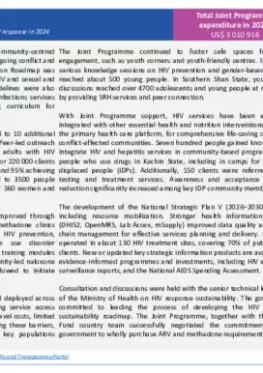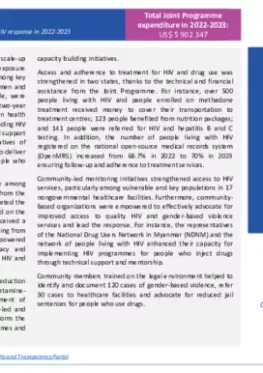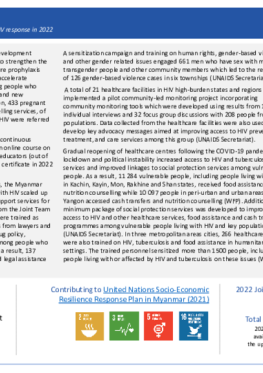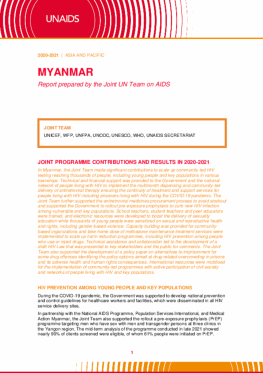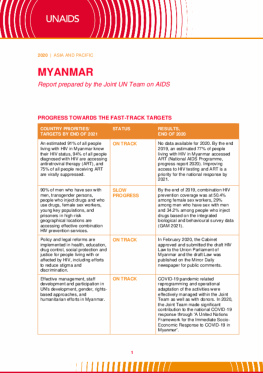|
Myanmar
In 2024, the Joint Programme delivered targeted, community-centred interventions to sustain and expand HIV services amid ongoing conflict and humanitarian challenges. A comprehensive HIV Prevention Roadmap was developed, providing strategic direction for integrated HIV and sexual and reproductive health (SRH) services. HIV Prevention guidelines were also updated to include hepatitis and sexually transmitted infections services tailored to key populations. Moreover, the training curriculum for prevention of vertical HIV transmission was also updated.
Pre-exposure prophylaxis (PrEP) services were expanded to 10 additional sites, reaching nearly 5000 members of key populations. Peer-led outreach in Shan State engaged over 5000 young people and adults with HIV services. Antiretroviral treatment access was maintained for 220 000 clients affected by conflict, with 60% receiving viral load testing and 95% achieving viral suppression. Hepatitis C treatment was expanded to 3500 people living with HIV, and SRH service referrals supported over 360 women and girls.
Care for over 18 000 people who inject drugs was improved through trainings of over 120 healthcare workers from 35 methadone clinics nationwide. These trainings included drug abuse and HIV prevention, methadone maintenance treatment and substance use disorder management. Community-based overdose management training modules are available after successful pilots. Additionally, community-led naloxone distribution was facilitated and technical assistance allowed to initiate overdose incidence recording and reporting.
Community-led HIV monitoring tools were upgraded and deployed across 14 facilities in three regions, identifying and addressing service access barriers, which included inadequate reimbursement of travel costs, limited service hours and inaccessibility of facilities. By addressing these barriers, HIV treatment uptake and viral load testing among key populations subsequently increased.


